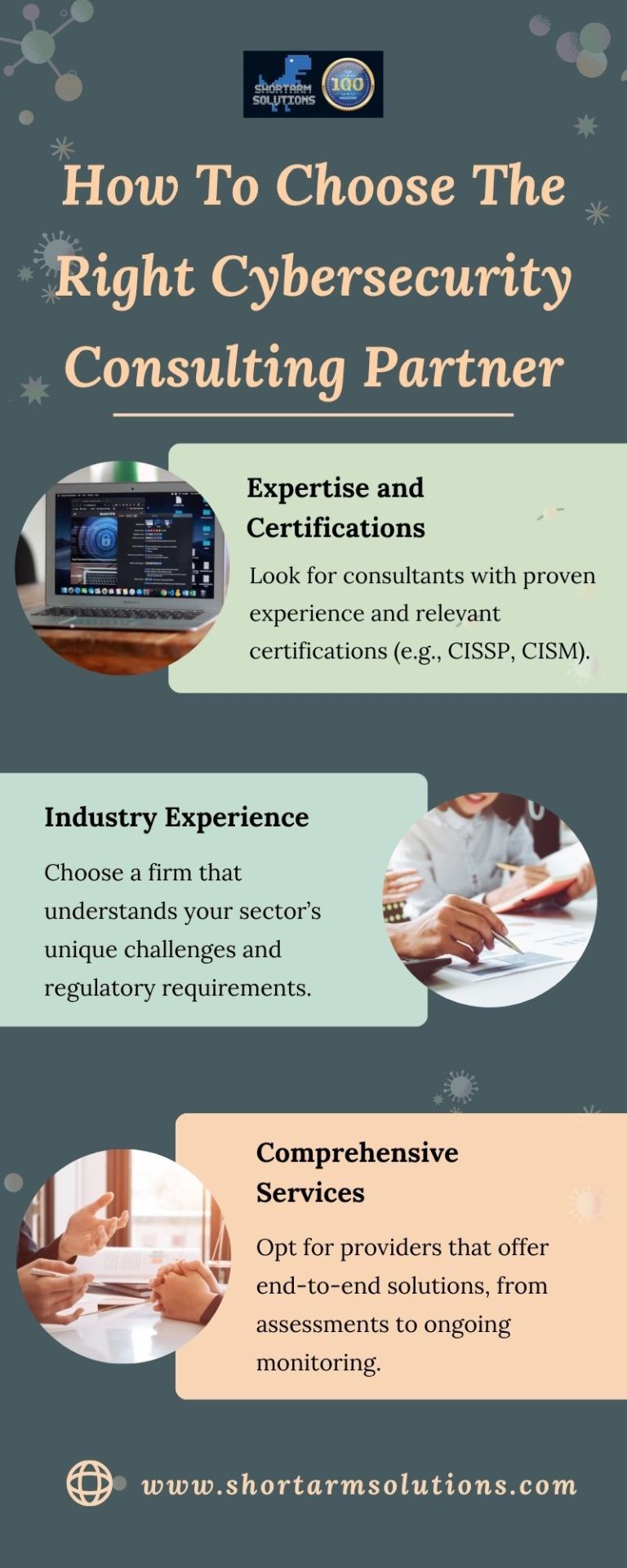ShortArm Solutions offers government and commercial businesses with white glove mission critical consulting services with particular emphasis on businesses who are small, socially, economically or otherwise disadvantaged. Our team will work with you to focus on your business continuity plans, revenue strategies, continuing education / certification and cybersecurity framework / maturation.
Don't wanna be here? Send us removal request.
Text
Secure Your Data with Expert AWS Cloud Managed Solutions

Protect your critical business data with advanced AWS cloud security. Our managed solutions include robust security management, regular patching, and access controls to safeguard your information. We leverage AWS security tools and best practices to ensure your data remains secure and compliant, providing you with peace of mind.
Visit Our Website: - https://www.shortarmsolutions.com/services/services-cyber-risk-compliance-strategy-2/
0 notes
Text
Best AWS Cloud Managed Services for Seamless Operations

Experience hassle-free cloud management with AWS Managed Services. Our experts handle everything from networking and server operations to application management, ensuring your business runs smoothly around the clock. Enjoy 24/7 monitoring, proactive support, and scalable solutions designed to optimize performance and reduce operational risks.
Visit Our Website: - https://www.shortarmsolutions.com/services/services-cyber-risk-compliance-strategy-2/
0 notes
Text
How To Choose The Right Cybersecurity Consulting Partner

Ready to strengthen your security posture? Contact a trusted cybersecurity consulting firm and take the first step toward comprehensive protection.
Learn More: - https://www.shortarmsolutions.com/
0 notes
Text
Strategies For Risk Management And Compliance

In the digital age, cybersecurity is not just a technical issue but a critical component of business strategy. For organizations like Short Arm Solution, navigating the complex landscape of cyber threats requires a robust system risk management and compliance strategy. This article delves into practical strategies that can fortify an organization's cybersecurity posture, ensuring it is well-equipped to handle the challenges of the modern digital world.
1. Understanding the Cyber Threat Landscape
The first step in developing a cybersecurity strategy is understanding the evolving nature of cyber threats. Organizations must stay informed about the latest types of cyber attacks, such as ransomware, phishing, and advanced persistent threats. This knowledge forms the foundation for a proactive cybersecurity strategy.
2. Establishing a Risk Management Framework
Risk management is pivotal in cybersecurity. Short Arm Solution should implement a framework that identifies, assesses, and mitigates cyber risks. This framework should be integrated into the organization's overall risk management strategy, ensuring cybersecurity risks are treated with the same rigor as financial or operational risks.
3. Compliance with Regulatory Requirements
Adhering to regulatory requirements is not just about legal compliance but also about strengthening cybersecurity defenses. Short Arm Solution must stay abreast of relevant cybersecurity laws and regulations, such as GDPR or HIPAA, and ensure their policies and procedures are aligned with these requirements.
4. Employee Training and Awareness
Employees are often the first line of defense against cyber threats. Regular training and awareness programs can equip them with the knowledge to identify and prevent potential cyber-attacks. This includes training on recognizing phishing emails, safe internet practices, and the importance of strong passwords.
5. Investing in Advanced Cybersecurity Technologies
Utilizing advanced cybersecurity technologies is a cornerstone of an effective cyber risk management strategy. Short Arm Solution's cybersecurity arsenal should include firewalls, intrusion detection systems, and encryption. Investing in AI and machine learning can also enhance threat detection and response capabilities.
6. Regular Audits and Continuous Improvement
Cybersecurity is not a one-time initiative but a continuous process. Regular audits of cybersecurity practices help in identifying vulnerabilities and gaps. This ongoing assessment and improvement process ensures that Short Arm Solution's cybersecurity strategies remain practical and relevant.
Conclusion
For Short Arm Solution, navigating the complexities of cybersecurity requires a multifaceted approach. Understanding the threat landscape, implementing a robust risk management framework, ensuring compliance, educating employees, investing in technology, and continually improving their cybersecurity practices can create a resilient and secure digital environment. In the ever-evolving domain of cyber threats, staying vigilant and proactive is the key to safeguarding digital assets and maintaining business continuity.
1 note
·
View note
Text
6 Key Components of an Effective Business Continuity Plan

Business continuity planning is a proactive strategy to ensure the uninterrupted flow of essential functions during and after a disaster, whether a natural calamity, a cyberattack, or any unforeseen event that might disrupt business operations. A solid plan minimizes the downtime and the financial implications of these events. In this blog, we'll break down the six pivotal components of a formidable business continuity plan and discuss the paramount importance of having one in place.
Why You Should Have a Business Continuity Plan
Mitigate Financial Losses: Downtime can cost businesses significantly, especially if crucial operations halt. A continuity plan helps reduce these losses by ensuring a quick return to business as usual.
Protect Business Reputation: Disruptions can erode trust among clients and stakeholders. A BCP demonstrates proactiveness, commitment, and professionalism, maintaining your business's credibility.
Enhance Decision-Making: In times of crisis, having a predefined plan eradicates
guesswork, ensuring that decisions are timely, informed, and efficient.
Employee Confidence: Employees are more likely to stay calm and focused when they know there's a plan. It ensures everyone knows their role and responsibilities during a disruption, reducing panic and confusion.
Legal and Regulatory Compliance: Some industries require businesses to have a continuity plan. Even if not mandated, a BCP can help avoid potential legal consequences resulting from disruptions.
Some Components that a business continuity plan needs
1. Risk Assessment and Analysis
Before creating a continuity plan, it's essential to understand the potential threats your business might face, including:
Identifying all possible risks, from natural disasters to technological issues.
Assessing the probability and impact of these threats.
Prioritizing them based on their potential severity and the business's vulnerability.
2. Business Impact Analysis (BIA)
This step is about gauging the potential consequences of a disruption. A BIA helps:
Determine the most crucial business functions and processes.
Estimate the downtime for each role.
Calculate the potential financial and non-financial impacts of each disruption.
3. Recovery Strategies
Once you understand the risks and impacts, it's time to devise strategies to recover from potential disruptions. Consider:
Alternative business locations if the primary site becomes unusable.
Backup systems and data storage to recover lost data.
Resources like equipment, staff, and technology are needed to resume operations.
4. Communication and Crisis Management
Clear and timely communication is crucial during a crisis. Your plan should include:
Pre-determined communication channels to inform stakeholders.
A designated crisis management team to handle communications.
Guidelines for what needs to be communicated, to whom, and when.
5. Training and Testing
A plan is only as good as its implementation. Regular training ensures:
All employees are familiar with the plan and their roles in it.
Regular drills and simulations to test the plan's effectiveness and find areas for improvement.
6. Review and Update
The business environment is dynamic, and so are the risks. It's vital to:
Regularly review and update the plan to address changes in your business, background, or any new potential threats.
Incorporate feedback from training sessions and real-life incidents to refine the procedure.
Conclusion
Business continuity planning equips organizations to handle disruptions, from natural disasters to cyber threats proactively. A strong continuity plan is critical for long-term business resilience by ensuring uninterrupted essential operations and reducing financial risks. For companies seeking sustained success, being prepared isn't just recommended—it's vital.
0 notes
Text
Developing A ComprehensDFive Incident Response Plan (IRP)

Today's digital landscape is filled with evolving challenges and threats. Being equipped to address cybersecurity incidents promptly is not just a choice but a necessity. An Incident Response Plan (IRP) offers a roadmap for businesses to navigate these challenges. Let's discuss the steps in formulating an IRP that harmonizes business priorities with risk management.
Recognizing the Significance of an IRPAt its essence, an IRP provides a protocol to follow when cybersecurity challenges arise, be it breaches or persistent threats. Grasping its importance is the first step towards ensuring resilience.
Core Elements of a Robust IRP
Ready, Set, Go!: Laying the groundwork involves assembling a specialized team, determining what qualifies as an incident, and arming them with the necessary tools.
Spotting & Documenting: Continual vigilance is crucial. Monitor for anomalies, ensuring they're not just identified but also well-documented.
Evaluation & Insight: Once a potential threat is spotted, its validity and magnitude need confirmation. Appropriate assessment tools can help in understanding the repercussions.
Isolation & Mitigation: It's about devising immediate and long-term strategies to restrict the incident and halt further complications.
Reflection & Forward Motion: Post-crisis, it's essential to revert to normalcy. This phase involves gleaning insights from the incident and fortifying measures against future occurrences.
Marrying Business Goals with Risk Management
Every enterprise has a unique threshold for risk. It's pivotal to ensure this threshold complements the firm's objectives. Whether it's a banking service prioritizing transaction security or a cloud-based service valuing uptime, aligning these values is crucial. Incorporating regular simulations and assessments helps fine-tune the balance.
Securing Organizational Approval
Success hinges on the organization-wide endorsement. Leaders must recognize and champion the IRP. Their acceptance guarantees resource allocation and underscores the plan's significance across all tiers of the organization.
Continual Upgradation and Refinement
As the cyber domain is ever-fluctuating, an IRP can't remain static. Drawing from simulated drills and real-time incidents, regular revisions help maintain the plan's relevance and potency.
Conclusion
Designing a comprehensive Incident Response Plan requires blending protective measures with overarching business visions. By ensuring that the IRP is dynamic, embedded in organizational culture, and synced with evolving challenges, businesses can effectively shield their assets and bolster confidence among partners and clients.
1 note
·
View note